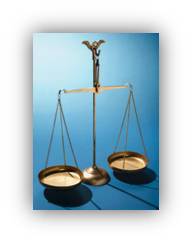A problem many of us have is too many measures and, consequently, too much to improve. We need to prioritise, but we somehow don’t do it well enough. Here’s a method to focus on what really matters most, that has over 116 years of proof that it works…
 In 1897, over a century ago, an Italian economist called Vilfredo Pareto made the discovery that 80% of the wealth of a population was owned by 20% of that population. The Pareto Principle, or 80/20 rule, is a pattern of predictable imbalance that keeps popping up in all kinds of contexts ever since. For example, the Quality Movement certainly grabbed onto it, coining phrases like “80% of the problem is caused by 20% of the causes.”
In 1897, over a century ago, an Italian economist called Vilfredo Pareto made the discovery that 80% of the wealth of a population was owned by 20% of that population. The Pareto Principle, or 80/20 rule, is a pattern of predictable imbalance that keeps popping up in all kinds of contexts ever since. For example, the Quality Movement certainly grabbed onto it, coining phrases like “80% of the problem is caused by 20% of the causes.”Is the 80/20 rule still relevant to us today?
The 80/20 rule is a guide for how to think about improving things. If you want a measure or result to improve, you have to change something. And with even a basic 80/20 analysis, you can find out what those “somethings” are which will have the greatest impact.
And in an age where time is scarce, and to-do lists are long, the sharper our focus can be on what matters most, the better our results will be.
When should we use the 80/20 rule?
If you’re not completely happy with how your work or life is going right now, or you know that there is scope to improve it, then practice asking questions like these:
- Which are the 20% of tasks I perform that generate 80% of my output?
- Who are the 20% of customers that generate 80% of our profitability?
- Who are the 20% of customers that have 80% of the need for our services?
- What are the 20% of products that generate 80% of our profitability?
- What are the 20% of investments I make that generate 80% of the return?
- What are the 20% of interruptions that cause 80% of my productivity problems?
- What is the 20% of literature I read that gives me 80% of the knowledge I need?
- Who are the 20% of suppliers that give me 80% of the goods and services I need?
- What are the 20% of complaints that take up 80% of my complaint handling time?
- Who are the 20% of friends & family that get 80% of my attention?
Asking questions like these shows you how much more influence you can have in changing things in your life and work. You don’t have to fight the current, nor do you have to just lay back and let it carry you. You can find a diagonal escape out of it with a focus on causes you can influence.
The 80/20 rule helps focus your attention on the things that have the BIGGEST likely impact on the results you want in your life. And by focusing on those things, you can more easily examine how you can influence them.
How to do a simple 80/20 analysis…
When you have framed your result and its potential causes in 80/20 questions like those above, you’ve set the scope for what kind of data to collect. If you’re going to know which are the 20% of causes that produce 80% of your result, you’ll need to measure both your result, and the degree of impact of each cause.
If you’re uncertain exactly what to collect data on, try using a cause-effect diagram to map out the possibilities (also known as a fishbone diagram – click here for examples). Then you can measure or estimate the relative impact of each cause on your end result.
A simple bar chart or Pareto chart is a great way to display the 80/20 analysis, once you have the data. For each cause you list, against it you will have a number that represents the size of its impact on your result. It might be dollars or hours or incidents, depending on your result. Chart the data and look for the tallest 20% of bars in the chart that visually account for about 80% of your measure (click here for examples).
A useful note: it won’t always be 80/20.
Sometimes you’ll find patterns that are 99/1, or 80/10 or 70/30. That’s fine. The point is that cause-effect relationships are very imbalanced; you’ll rarely find 50% of the causes producing 50% of the effect. So prioritise, and give your attention to the 20% that matters most right now.
Source: KPI Library











0 comments:
Post a Comment